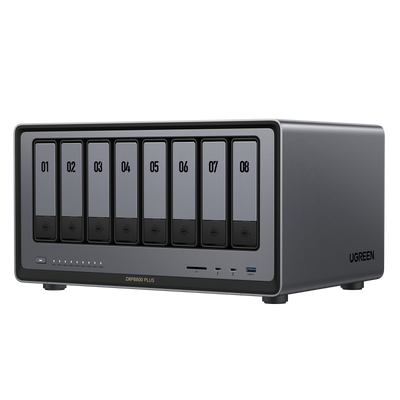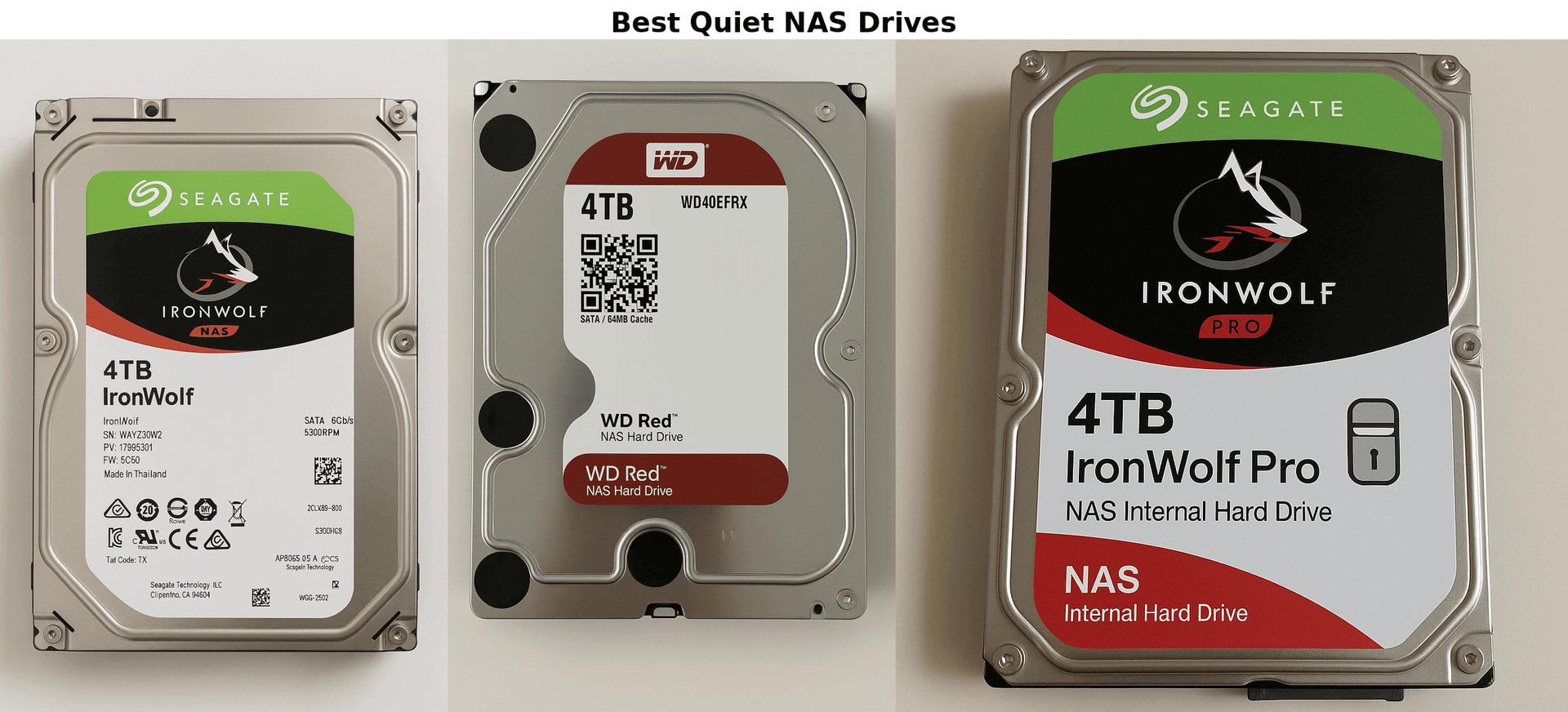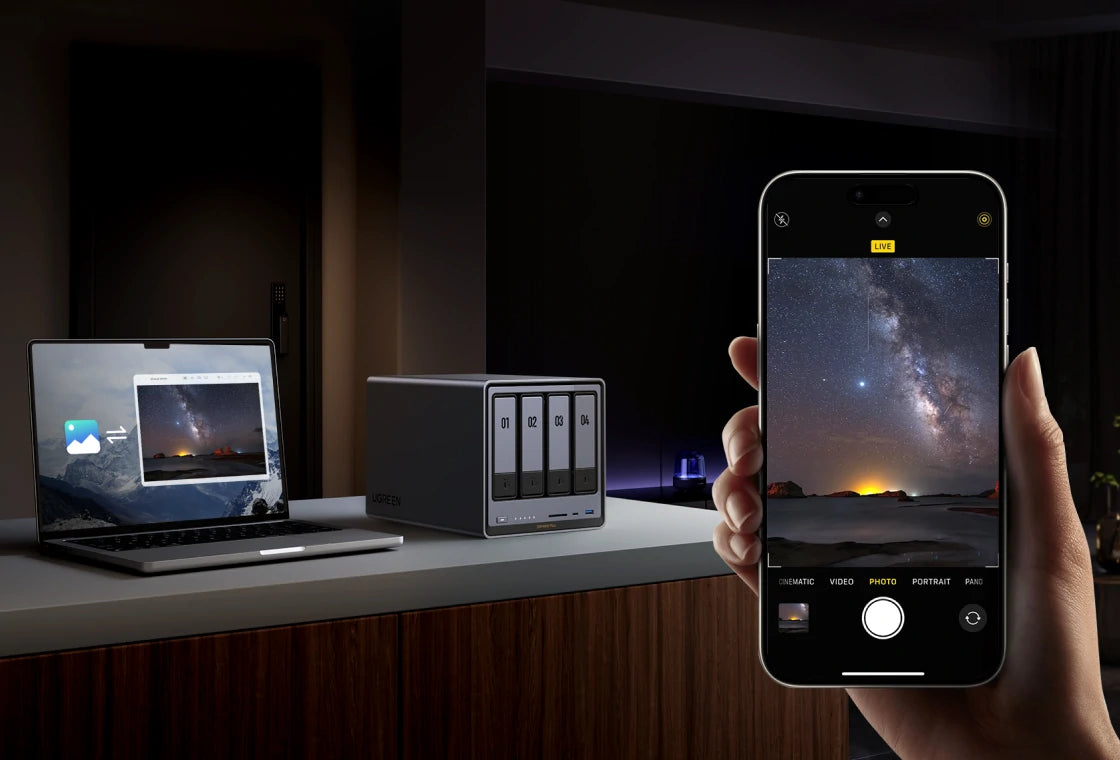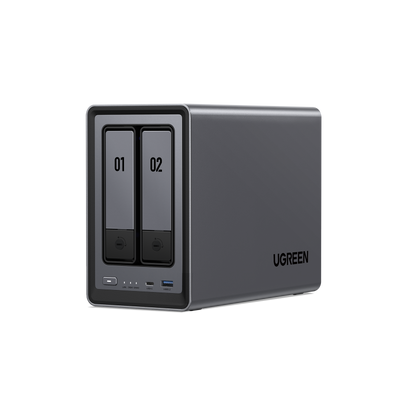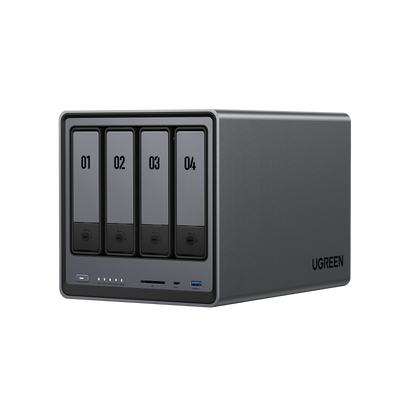How to Choose the Best Home NAS for Secure Storage in 2025
For many households, digital data is everywhere and nowhere all at once. As our digital lives expand, so does the frustration of inconsistent backups, fragmented access, and questionable privacy. This is where a home NAS (Network Attached Storage) comes in: a central hub to keep all your digital content secure, organised, and always available.
But if you’re new to the world of NAS, the questions can be overwhelming. Should you get two bays or four? Do you need RAID? How much RAM is enough? In this guide, we’ll walk you through what to consider when choosing a NAS and explain why each factor matters, all in a clear and straightforward way.

Key Factors to Consider When Choosing a Home NAS
Choosing the right NAS is less about technical specifications and more about your daily experience.
Storage Capacity
Step 1: Tally Up Your Devices
First, make a list of all the devices that will store files on your NAS (e.g., computers, phones, cameras). Estimate how much space their important files currently use:
- Computer: 1 TB (1,000 GB) of photos, videos, and documents.
- Phone: 200 GB of photos you don’t want to delete.
- Camera: 500 GB of holiday videos.
Step 2: Account for Shared Space
If multiple people will use the NAS, set aside extra space for shared files. For example:
- Family movies and music: 300 GB.
Step 3: Plan for Growth
Multiply your current total by 1.5 to 2.0 to account for new files you’ll create over the next few years. For example:
(1,000 GB + 200 GB + 500 GB + 300 GB) × 1.8 = 3,600 GB (3.6 TB)
Recommendation: We recommend choosing a NAS with at least 6 TB of storage. This will cover your current needs (3.6 TB) and leave plenty of room for system backups and future files.
Performance
Most homes need less raw performance than marketing materials might suggest. Unless you’re hosting multiple simultaneous 4K streams or running intensive applications, moderate specs (like an efficient Intel Celeron CPU and 4–8 GB of RAM) are more than enough.
RAID
RAID 1 or RAID 5 configurations are ideal for home use, as they ensure your data can survive if a drive fails. Remember, though, RAID isn’t a backup; it’s for redundancy. You will still want a separate backup solution, but RAID provides the peace of mind that your data is safe from a single drive failure.

Ease of Use
Look for a NAS with an intuitive operating system and a straightforward initial setup. Choose a brand known for its user-friendly interface. Your NAS should feel like a natural extension of your digital routine, not another tech chore.
Connectivity
Future-proof your setup modestly by choosing a NAS that offers at least 2.5GbE ports. This provides a noticeable speed boost for file transfers without demanding expensive upgrades across your entire home network.
Scalability
Choose a NAS that can scale with you. Extra drive bays and expandable RAM slots allow you to adapt comfortably as your needs evolve over time.
Brand Reliability and Support
An often-overlooked factor is the quality of manufacturer support. Regular firmware updates and responsive customer service are crucial for long-term satisfaction. For example, newer brands like UGREEN NAS are entering the market with excellent hardware and a strong focus on support. Don’t be afraid to consider an innovative newcomer, as they can often offer great value compared to more established but slower-moving brands.

Recommended NAS Solutions for Home Users
Choosing the right NAS can transform digital clutter into organised efficiency. The best choice, however, depends entirely on your specific needs and expectations.
1. The Entry-Level NAS: Simplicity First
Beginners are often overwhelmed by complexity and worry about making an expensive mistake. The good news is that you don’t need top-tier specs to achieve excellent daily performance. Often, simplicity is the key to reliability and ease of use.
Recommendation:
-
UGREEN NASync DXP2800 (2-Bay)
- Intel N100 Quad-core Processor
- 8 GB RAM, ample for daily backups and casual media streaming
- RAID 1 support for peace-of-mind redundancy
- 2.5GbE connectivity ensures quick file transfers
Why this NAS? It’s the perfect starting point: intuitive, affordable, and more powerful than most basic entry-level options.
{{UGPRODUCT}}
2. The Media Enthusiast: Optimised for Streaming and Storage
Home media collections can quickly outgrow standard hard drives, leading to frustrating bottlenecks and limited access. Instead of focusing only on sheer capacity, prioritise a NAS with both speed and smart media-handling features (like built-in transcoding).
Recommendation:
-
UGREEN NASync DXP4800 Plus (4-Bay)
- Intel Pentium Gold Processor for robust media handling
- Expandable RAM up to 64 GB for smooth multitasking
- High-speed 10GbE connectivity for effortless 4K streaming
- RAID 5 or 6 support for an ideal balance of redundancy and usable storage
Why this NAS? It delivers powerful streaming performance without a complex setup, making your media accessible and hassle-free, even in demanding scenarios.
{{UGPRODUCT}}
3. The Power User: Built for Scalability and Performance
Tech-savvy users often underestimate their future storage and processing needs. Choosing a robust and scalable NAS from the outset might seem like an extravagance, but it can save you money and headaches in the long run by avoiding frequent, incremental upgrades.
Recommendation:
-
UGREEN NASync DXP8800 Plus (8-Bay)
- Enterprise-grade Intel processor (Core-series performance)
- High RAM capacity with expansion slots for future-proof flexibility
- Dual high-speed 10GbE connectivity options
- Advanced RAID configurations (RAID 6 or 10) to safeguard extensive data archives
Why this NAS? It’s designed for heavy-duty use, ensuring you won’t quickly outgrow your system, and it meets the demands of complex workflows, home labs, or serious media production.
Conclusion and Final Tips
Choosing the right NAS is not about picking the device with the most impressive specs; it’s about finding the solution that genuinely fits your needs and simplifies your digital life.
- Prioritise usability and reliability over raw specifications. The most advanced NAS is worthless if it’s too complicated or unreliable to manage.
- Future-proof smartly. Focus on expandability and adaptability rather than maximum initial capacity. Choose a NAS that allows for easy upgrades.
- Don’t underestimate the value of support and community. Reliable manufacturer support, regular software updates, and a strong user community can make all the difference.
Ultimately, your home NAS should simplify your life, protect your valuable data, and make your digital environment feel secure, organised, and accessible, rather than overwhelming.
